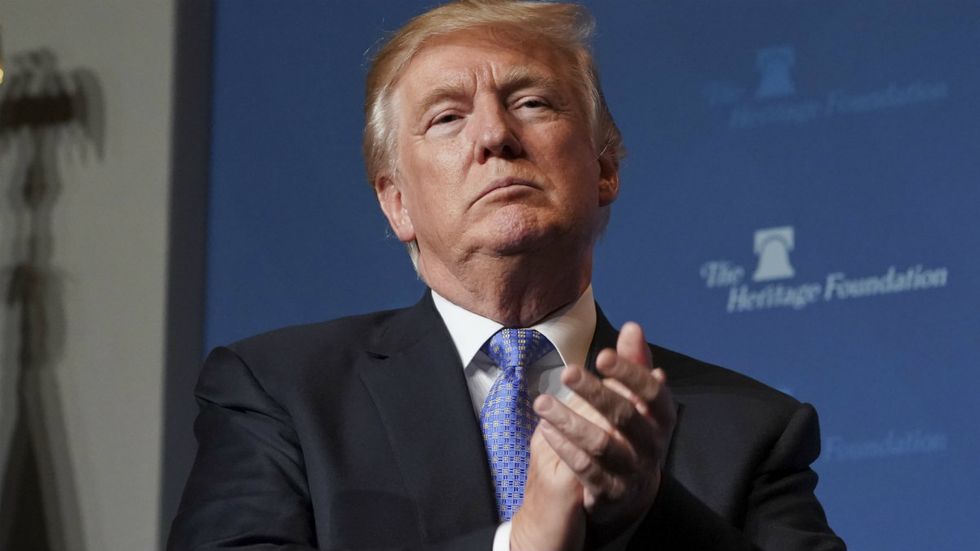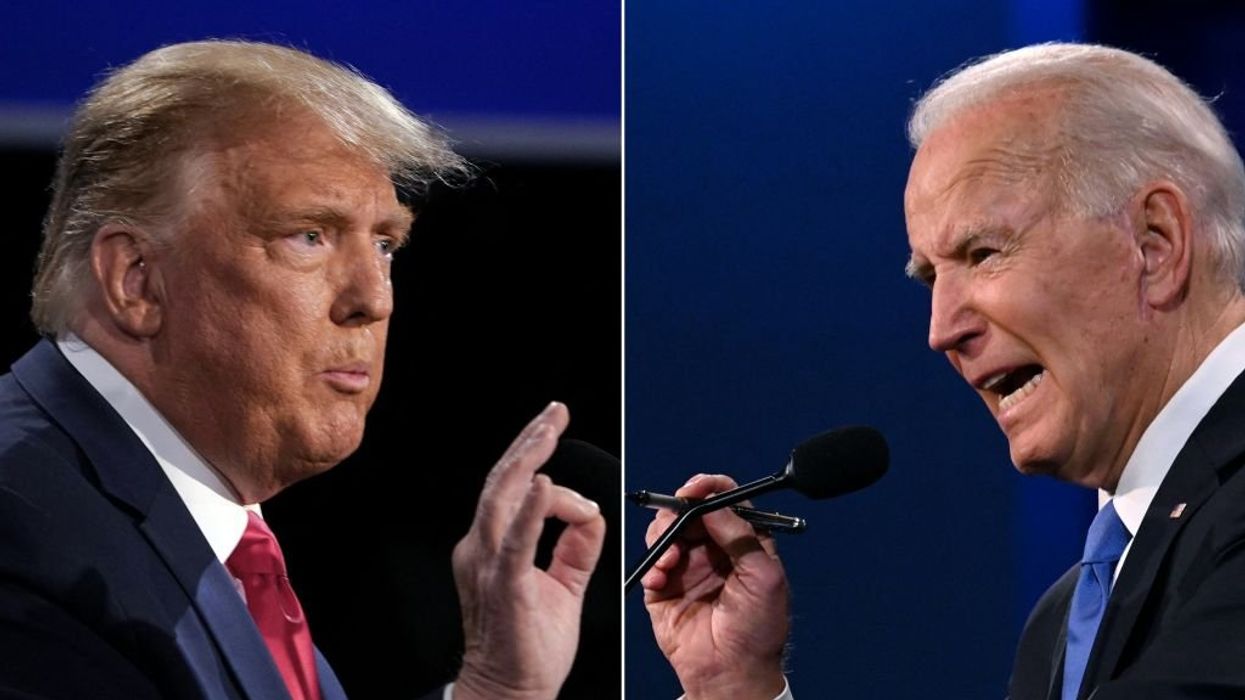
© 2024 Blaze Media LLC. All rights reserved.
The president used the highly influential Heritage Foundation — a think tank that helped define Reaganomics in the ’80s — as a backdrop for a speech to push a vital piece of his Make America Great Again agenda: Tax reform.
History has shown that the best way to reform taxes is to cut them. When people can keep more of their money, they have the freedom to spend it as they please, which injects more cash into the economy and causes it to grow.
Trump’s speech was a reminder of this economic principle, and the Heritage Foundation has been front and center on transforming these ideas into law. A senior Trump administration official got it right when he told reporters Tuesday: “We should apply the lessons that we have learned from history to the problems of today.”
Ronald Reagan’s tax cuts resulted in the “largest peacetime economic boom in American history.” According to the Tax Foundation, Bush’s 2001 tax cut contributed 2.3 percent in economic growth, the 1997 Clinton tax cuts contributed almost 1 percent of economic growth over 10 years, and the Kennedy tax cuts of 1962 and 1964 contributed 6.2 percent of economic growth over 10 years.
President Trump confirmed his belief that “our economy cannot take off … like it should unless we transform America’s outdated, complex, and extremely burdensome tax code.”
The White House plan would make the tax code a lot simpler. Families could fill out their taxes on a single sheet of paper, which should thrill the environmentalists! It would reduce the number of tax brackets, cut rates for the middle class so they can keep more of their money, slash corporate taxes, and encourage businesses to bring their assets back to the U.S.
Trump called it “the biggest reduction in taxes in the history of this country.”
While there are, of course, many ways of looking at the data to determine whether it is, in fact, the biggest tax cut in history, the proposal is certainly one of the biggest and a much-needed adjustment to the tax code. As Americans struggle to make ends meet and businesses continue to get hit with the highest corporate tax rate in the developed world, this sort of legislation would be an effective way to short-circuit the economic slump that grievously defined the Obama era. If passed, it would be a historic cornerstone of Trump’s presidential legacy.
The big question is whether or not our do-nothing Congress will actually step up to the plate.
Trump admitted that Congress, particularly its Democrats, is a formidable obstacle and that “it’s going to be hard getting the Democrats because they’re obstructionists and they vote in blocs.” He asked the Heritage Foundation to help “get our tax cuts through the House, through the Senate, and to my desk for signature.”
Given that Congress has torpedoed every other attempt from the president to codify the will of the American people into a law, it’s hard to imagine this undertaking would be any different.
When asked why people should be hopeful that Congress will change its tune, Heritage Foundation policy analyst Adam Michel told CRTV that there are two reasons we can be optimistic. One: “They have this powerful tool of reconciliation that’s built into the budget process that they’re moving on this week.” Two: “There’s more consensus on tax reform than there was on health care reform.” Together, those pieces mean that “they can pass tax reform through the House and the Senate with 51 votes in the Senate, and that makes it a whole lot easier,” Michel said.
The lack of detail on Trump’s tax reform makes it a challenge to realistically evaluate whether this bill could reach a bipartisan consensus. “There’s not enough details to really speak about how it helps an individual person,” Michel said, adding, “I know that economic growth will help everyone across this board.”
To solidify those details, the administration is working — just like President Reagan did — with economists at Heritage, including chief economist Stephen Moore. “We’ve been working long and hard together,” the president said in his speech, meaning Moore. “We have been in consultation with people in the House and Senate and administration,” Adam Michel told us. “Everyone knows what we need. It’s just a matter of getting there. It’s providing advice when necessary, but it’s really just about sticking to the principles that we’ve tried time and time again throughout history.”
Find out what the mainstream media won't tell you about President Trump and his administration.
Sign up to get CRTV's free White House Brief delivered right to your inbox once a day.
Jon Miller is CRTV’s White House correspondent. He previously worked for Fox News, The Blaze, and Mercury Radio Arts and graduated from Columbia University with a degree in political science and classics. Follow him on Twitter @millerstream.
Want to leave a tip?
We answer to you. Help keep our content free of advertisers and big tech censorship by leaving a tip today.
Want to join the conversation?
Already a subscriber?
more stories
Sign up for the Blaze newsletter
By signing up, you agree to our Privacy Policy and Terms of Use, and agree to receive content that may sometimes include advertisements. You may opt out at any time.
© 2024 Blaze Media LLC. All rights reserved.
Get the stories that matter most delivered directly to your inbox.
By signing up, you agree to our Privacy Policy and Terms of Use, and agree to receive content that may sometimes include advertisements. You may opt out at any time.



